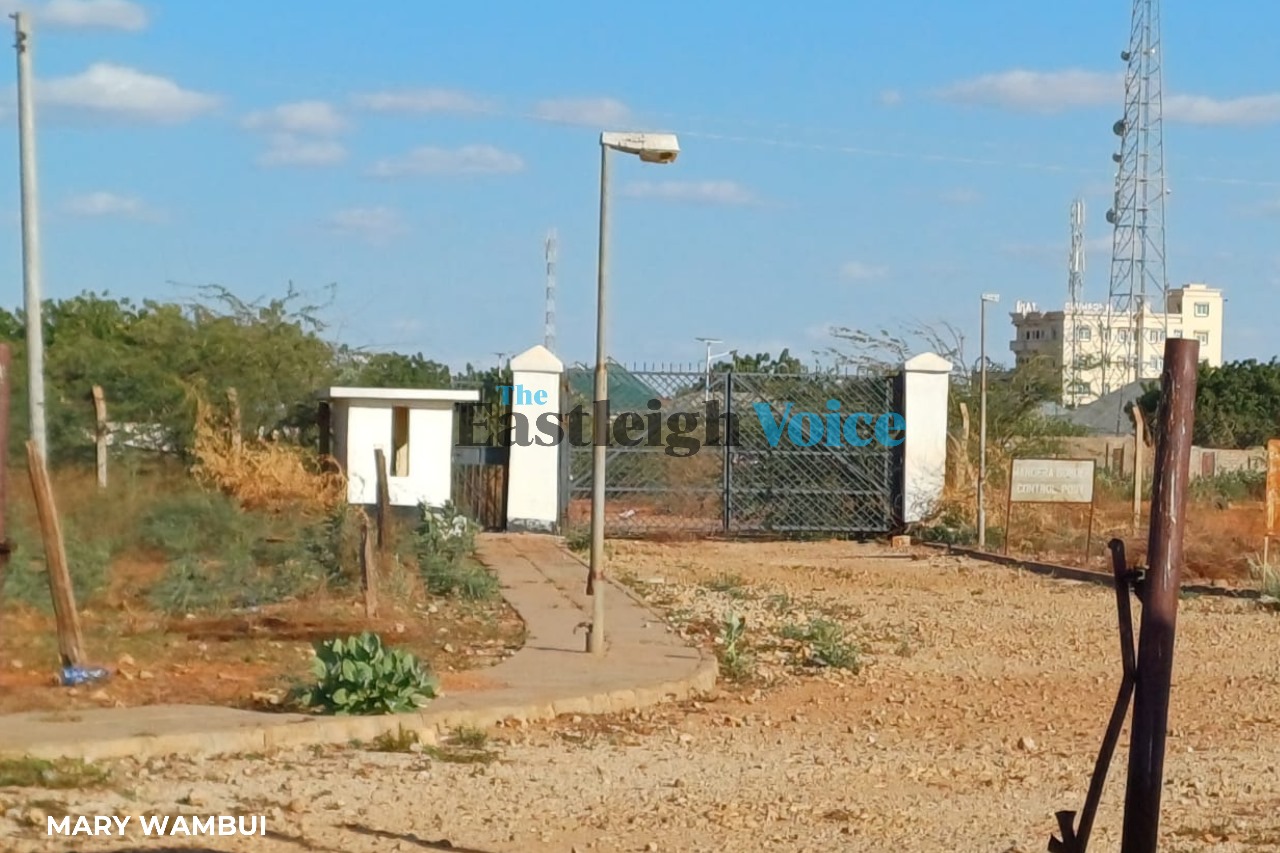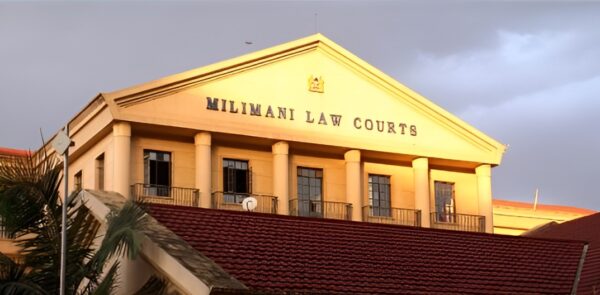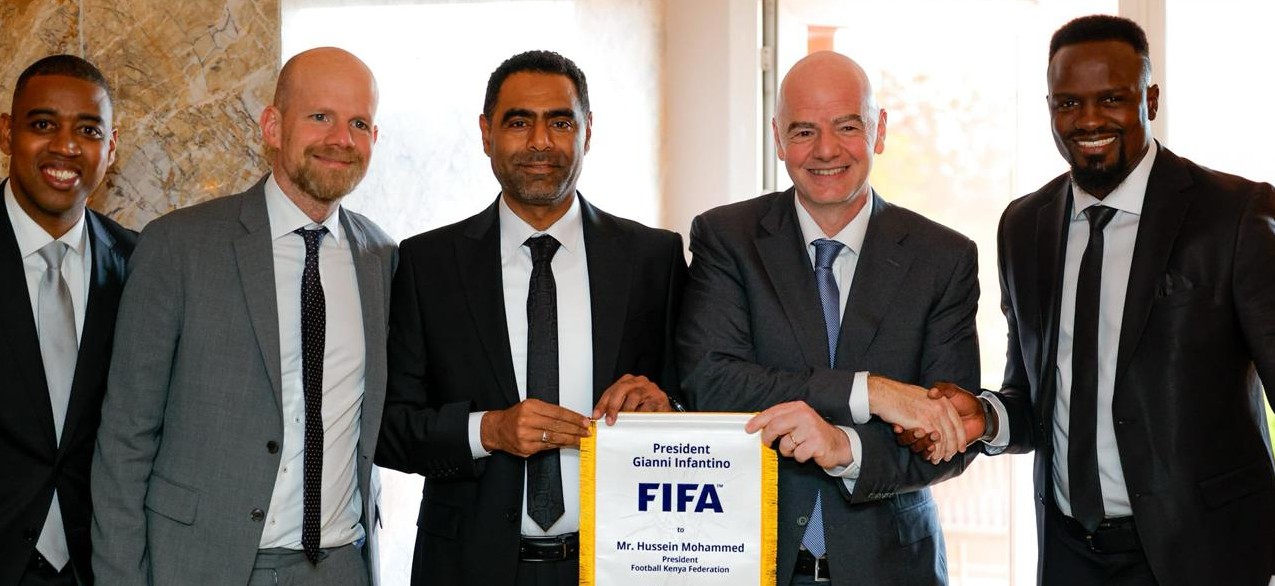Mandera bears brunt of Somalia border closure, unregulated trade at Ethiopia crossing point

Despite the communities living along either side of the border with Ethiopia trade and co-exist peacefully, the activities at the crossing point are unregulated due to the lack of an official entryway and a customs office.
When Kenya closed its border points with Somalia over a decade ago, the plan was to reduce infiltration by Al Shabaab militia into the country.
At the time, Kenya was tired of incessant terror attacks and kidnapping of foreigners on its soil. It had decided to pursue the militia in their hideouts inside Somalia under the Kenya Defence Force's Operation Linda Nchi.
More To Read
- Ex-Senator Billow Kerrow slams Mandera Governor for moving Jamhuri Day celebrations to Elwak amid worsening drought
- Mandera County declares severe drought emergency as water sources dry up
- Mandera County Commissioner assures residents of security ahead of Banisa by-election
- Mandera launches emergency food aid for 15,000 amid deepening drought
- Mandera residents challenge gazette-only notices in landmark land case
- Court temporarily halts Mandera County land allocation
Today, in hindsight, locals in Mandera and their leaders say the closure of the border, has robbed them and the national government of years of revenue and denied the county the opportunity to achieve its trade potential.
Mandera County is located in the Mandera Triangle, a unique region that shares an international border with Ethiopia to the North and Somalia to the East, both of which have been providing 80 per cent of the food consumed locally, especially during heavy rainy seasons and prolonged droughts.
For years, its borders with Ethiopia at Suftu and Rhamu have remained open and vibrant allowing a largely informal cross-border movement of persons and goods via River Daua.
While the communities living along either side of the border with Ethiopia trade and co-exist peacefully, the activities at the crossing point are unregulated due to the lack of an official entryway and a customs office.
On the other hand, the Kenya-Somalia border point 1 is fully equipped with an official entryway, a border patrol police post and immigration offices but has remained closed for the last 16 years.
Consequently, access to Bula Hawa town, located on Somalia's side of the border is minimal and guarded compared to the Ethiopian border.
 Interior CS Kithure Kindiki accompanied by senior security officials when he visited the Mandera border post on February 2, 2023, (Photo: MINA)
Interior CS Kithure Kindiki accompanied by senior security officials when he visited the Mandera border post on February 2, 2023, (Photo: MINA)
Locals however use illegal routes to cross over to Somalia to fetch essential commodities from Bula Hawa town such as Sugar, rice, powdered milk and pasta and "export" maize four, tea leaves and plastics from Kenya.
The movements do not happen in the dark, officials are aware and though they do not encourage it, they do not ask them to stop.
"Whatever is happening is not legal, it is very minimal, just a few things for subsistence in terms of food, not major things. This is just for the sustainably of the people because sourcing food from Nairobi to Mandera is very expensive, by the time it reaches here the prices are exorbitant for the local people to manage, so you will find most of the sugar, pasta and some domestic products used at home get sourced from across the border," Mandera East Deputy County Commissioner Patrick Meso says.
Huge losses
His sentiments are echoed by county officials, who feel that while the people have access to untaxed trade, the delayed reopening of the Somalia border and construction of proper access point and customs office on the Ethiopia border has occasioned both it and the national government huge losses.
Consequently, the two countries are yet to gain from Somalia's entry into the East Africa Community (EAC) last year, which on paper signified the start of the free movement of goods, people/ labour and capital.
 President William Ruto congratulating his Somalia counterpart Hassan Sheikh Mohamud for joining the East African Community in November last year. (Photo: PCS)
President William Ruto congratulating his Somalia counterpart Hassan Sheikh Mohamud for joining the East African Community in November last year. (Photo: PCS)
Mandera leaders say the move to close the border had been opposed by leaders from the North Eastern region who presented a proposal to the then Minister for Defence and the Vice President to instead deploy troops along the border.
"That proposal was rejected," Mandera Governor Mohamed Adan Khalif recalls.
He feels the closure of the border failed to achieve its intended purpose, as the country still faced attacks from militants who had infiltrated using illegal routes along the vast over 1,000km stretch of the Kenya-Somalia border.
"Is the purpose as to why the border was closed achieved? No. For me and the people of Northern Kenya, closing the border doesn't make sense. We have had discussions with all the successive governments and lastly with President William Ruto who said it will reopen soon. Waziri Kindiki came here and the border post was upgraded and readied for the opening but an attack happened somewhere along the border and the programme was postponed."
While Ethiopia also faced the threat of Al Shabaab, it kept its border with Somalia open allowing trade to continue seamlessly, under the close watch of both countries' security agencies.
"Ethiopia and Somalia are doing trade; their border has never been closed. Our suggestion as leaders has always been to reopen the border and then protect our country. Closing this post doesn't improve any security. We would have been collecting revenue here if it was open rather than allowing some food and some items to be smuggled in and out of the country. Most of our people living in the towns along the border here rely on Somalia for their small trade," added the governor.
 Kenya's border with Ethiopia at Suftu in the Mandera triangle where informal trade is thriving. (Photo: Mary Wambui)
Kenya's border with Ethiopia at Suftu in the Mandera triangle where informal trade is thriving. (Photo: Mary Wambui)
In May last year, the government kicked off plans to open the Somalia border following the launch of a three-year UK-funded Sh1.7 billion Deris Wanaag Project, which translates to "Good Neighbourliness".
The project seeks to improve regional security and counter-extremism for enhanced cross-border coexistence and trade.
At the time, the government declared that the border with Somalia would be reopened in phases starting with Bula Hawa in 30 days, followed by Liboi also in Mandera within 60 days and Ras Kamboni in Lamu County within 90 days.
Shelved plans
The plans were however shelved two months later following a spate of attacks in Lamu, Wajir, Garissa and Mandera counties that left more than 20 people dead.
"Kenya and Somalia have been planning to re-open our border points in Mandera, here in Liboi, Kiunga and other areas along the border. The plan will go on, but at the moment, we are delaying it. In the past month, we have noted and experienced disruption of peace and security. We have stopped that plan for a period to allow us to deal with the militants," Interior Cabinet Secretary Kithure Kindiki announced in July.
In Mandera, locals are upbeat that the Somalia border will still reopen at some point and that border facilities at Suftu and Rhama will be established to broaden the trade between Mandera and Ethiopia.
 Kenya's border with Somalia at Border Point 1 in Mandera has remained closed for the last 16 years, hindering formal trade between the two countries. (Photo: Mary Wambui)
Kenya's border with Somalia at Border Point 1 in Mandera has remained closed for the last 16 years, hindering formal trade between the two countries. (Photo: Mary Wambui)
Last week, a multi-agency team led by the Kenya Revenue Authority (KRA)'s Deputy Commissioner of Customs, Border Management and Enforcement Mr Macharia Chege assessed plans to establish a joint Border Post between Kenya and Ethiopia to streamline customs clearance and facilitate trade, as well as the free movement of people.
This will be made possible with the construction of two bridges one at Malka Suftu in Mandera town and the other at Malka Ladeni in Rhamu through the World Bank-funded Horn of Africa Gateway Development Project (HoAGP) to allow vehicular movement to and from Ethiopia.
"Most of the onions you find around here come from Ethiopia, even the ones sold in Karatina, Kiranyaga come from Ethiopia via Mandera. Yes, there is farming going on in the county but most onions are from Ethiopia," said Meso.
Mandera was poised to be an exit route for vehicle exports from Kenya but with the current state of the borders, that cannot be done.
The closure has further affected humanitarian agencies that were for long using the Somalia border to transport aid to the Horn of Africa.
Fortunately, all is not lost, last week, a number of them announced plans to open several United Nations Agencies' offices in the town including the International Organisation on Migration (IOM), United Nations Development Programme (UNDP) and the World Health Organisation (WHO).
"When we start seeing teams coming to assess, it means there is goodwill from the high office and thus will be done in due course," added Meso.
At the same time, the proposed North Eastern Transport Improvement Project (NETIP) that seeks to improve road transport along the Isiolo-Wajir-Mandera (740KM) road corridor has begun the project.
Locals hope the developments will open up the county not just to the rest of Kenya for trade, leisure and agriculture as well as the region but to the rest of the Horn of Africa via Ethiopia and Somalia.
"In Mandera, people are more connected to Somalia and Ethiopia than Nairobi, Kenya reason being, from where we are seated, Mogadishu is roughly 500 kilometres from Mandera, while Nairobi is close to 1,200km from Mandera and that translates to roughly 70 to 80 per cent of our products, in terms of businesses, all coming from either Somalia or Ethiopia because of transport costs. What we get from Kenya is mainly building and construction materials, detergents, medical supplies, plastic items and so forth which is limited to a very small percentage of what Mandera people need for their businesses," Trade and Cooperatives CEC Adan Dakane Hamoud said.
The changes are expected to improve the fortunes of the county which is currently served by about three daily passenger flights.
Currently, it takes an average of three days during the dry season to transport goods to Mandera from Nairobi (983 km), compared with 12 hours for a similar distance journey from Mombasa to Busia along the Northern Corridor.
For a bus trip, the fare on the former is over Sh5,000, about two and half times higher than a similar bus journey from Mombasa to Busia.
Top Stories Today













































